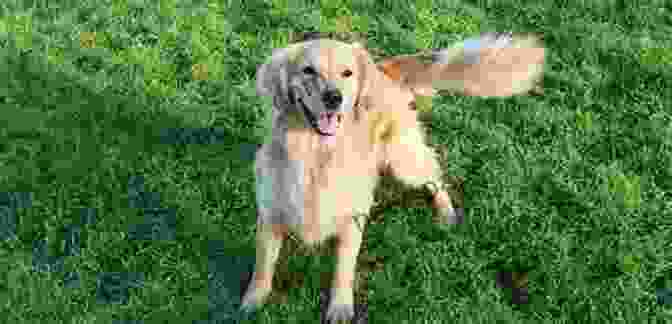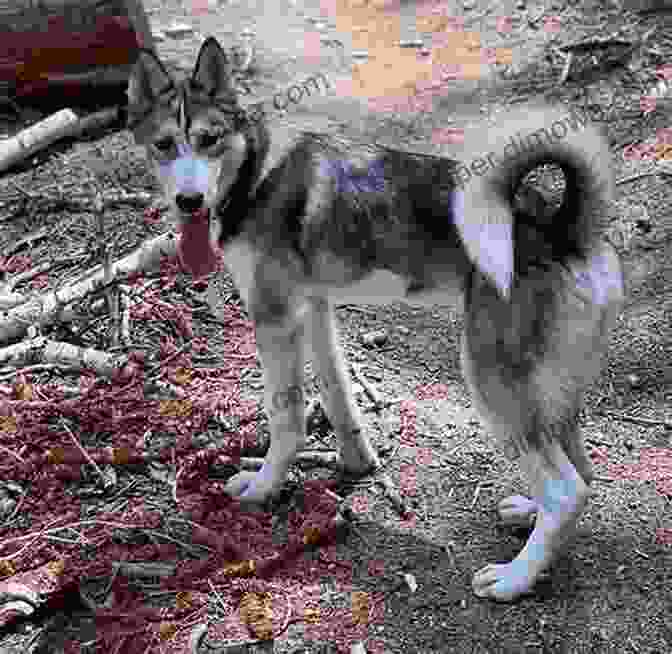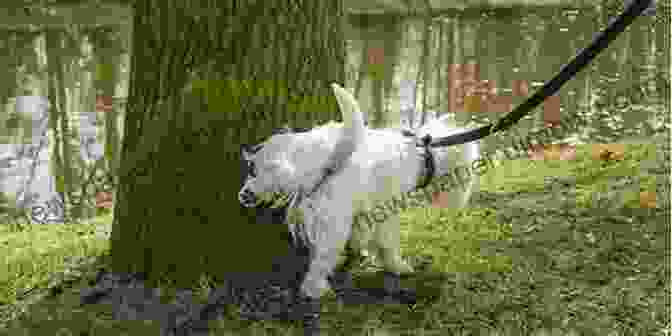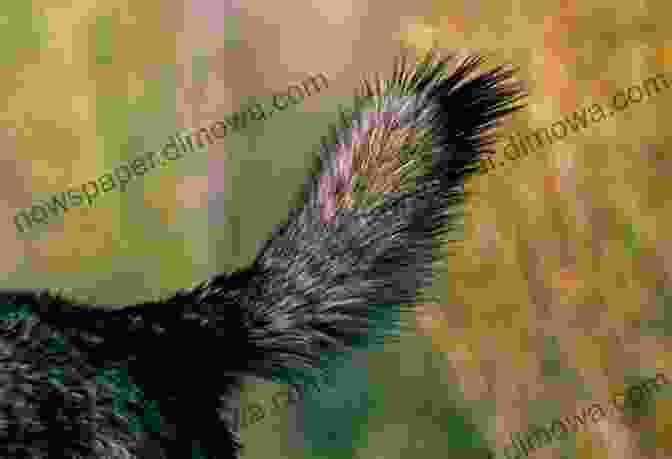Why Dogs Have Tails: Unraveling the Evolutionary Mystery


5 out of 5
| Language | : | English |
| File size | : | 21720 KB |
| Screen Reader | : | Supported |
| Print length | : | 36 pages |
| Lending | : | Enabled |
Dogs, our beloved companions and loyal friends, are known for their expressive tails that convey a wide range of emotions and communicate with us and their fellow canines. But have you ever wondered why dogs have tails in the first place? What evolutionary forces shaped this distinctive feature and gave it such versatility? In this article, we embark on a journey to uncover the fascinating reasons behind why dogs have tails, exploring the scientific research and captivating stories that shed light on this evolutionary enigma.
1. Balance and Coordination
One of the primary reasons why dogs have tails is for balance and coordination. A dog's tail acts as a counterbalance, helping it to maintain its equilibrium while running, jumping, or navigating uneven terrain. When a dog turns, its tail provides stability by swinging in the opposite direction to keep the body balanced. This is especially important for dogs that engage in agility or other athletic activities that require precise body control.

2. Communication
Tails also play a crucial role in canine communication. Dogs use their tails to convey a variety of emotions and intentions to both humans and other dogs. A wagging tail can indicate happiness, excitement, or a friendly approach, while a tucked-in tail can signal fear, submission, or aggression. By observing a dog's tail, we can better understand its mood and behavior, fostering stronger bonds and more effective interactions.

3. Thermoregulation
In certain breeds, tails also serve as a tool for thermoregulation. Dogs with thick, bushy tails can wrap them around their bodies to conserve heat during cold weather. This is particularly important for breeds that originated in cold climates, such as Siberian huskies and Alaskan malamutes. Conversely, dogs with thin, narrow tails have less insulation and may use their tails to cool down by fanning themselves.

4. Scent Marking
Dogs have scent glands located near their tails, which they use to mark their territory and communicate with other animals. By rubbing their tails on trees, bushes, or other objects, dogs leave behind their unique scent, indicating their presence to other members of their species. This behavior is particularly common in male dogs and can help establish dominance or attract potential mates.

5. Emotional Expression
Beyond their functional roles, tails also play a significant role in expressing emotions and communicating with humans. A dog's tail can indicate happiness, excitement, fear, anxiety, or aggression. By observing a dog's tail and body language, we can gain valuable insights into its inner emotional state and respond appropriately.

6. Evolutionary Origins
The evolutionary origins of dog tails can be traced back to their wolf ancestors. Wolves have long, bushy tails that serve multiple purposes, including balance, communication, and warmth. As dogs evolved from wolves, their tails underwent changes due to selective breeding and domestication. While some breeds retain long, bushy tails similar to their wolf ancestors, others have developed shorter, thinner tails or even no tails at all.

The tail of a dog is not merely an appendage but a remarkable evolutionary adaptation that serves a plethora of functions. From balance and coordination to communication and emotional expression, dogs' tails play a vital role in their behavior, anatomy, and interaction with the world around them. By understanding the fascinating evolutionary reasons behind why dogs have tails, we can appreciate the complexity and beauty of these extraordinary creatures and strengthen our bond with them.
5 out of 5
| Language | : | English |
| File size | : | 21720 KB |
| Screen Reader | : | Supported |
| Print length | : | 36 pages |
| Lending | : | Enabled |
Do you want to contribute by writing guest posts on this blog?
Please contact us and send us a resume of previous articles that you have written.
 Book
Book Novel
Novel Page
Page Chapter
Chapter Text
Text Story
Story Genre
Genre Reader
Reader Library
Library Paperback
Paperback E-book
E-book Magazine
Magazine Newspaper
Newspaper Paragraph
Paragraph Sentence
Sentence Bookmark
Bookmark Shelf
Shelf Glossary
Glossary Bibliography
Bibliography Foreword
Foreword Preface
Preface Synopsis
Synopsis Annotation
Annotation Footnote
Footnote Manuscript
Manuscript Scroll
Scroll Codex
Codex Tome
Tome Bestseller
Bestseller Classics
Classics Library card
Library card Narrative
Narrative Biography
Biography Autobiography
Autobiography Memoir
Memoir Reference
Reference Encyclopedia
Encyclopedia Jessamy Taylor
Jessamy Taylor Jonas Gomes
Jonas Gomes Jeff Davis
Jeff Davis Jasmin Kaur
Jasmin Kaur Yoru Sumino
Yoru Sumino Jenny Harrison
Jenny Harrison Jennifer Soldano
Jennifer Soldano Jean Jacques Greif
Jean Jacques Greif Jarett Fajardo
Jarett Fajardo Jeff Pearlman
Jeff Pearlman Jaquavis Coleman
Jaquavis Coleman Julian P Hume
Julian P Hume Wayne A Freeman
Wayne A Freeman Jessica Grey
Jessica Grey Philippe J Dubois
Philippe J Dubois Je Czaja
Je Czaja Janet Hubbard Brown
Janet Hubbard Brown Marie
Marie Jessica Verday
Jessica Verday Jessica Merrill
Jessica Merrill
Light bulbAdvertise smarter! Our strategic ad space ensures maximum exposure. Reserve your spot today!

 Aaron BrooksElevate Your Bowhunting Prowess with the Bowsmith Pro II: The Ultimate Guide...
Aaron BrooksElevate Your Bowhunting Prowess with the Bowsmith Pro II: The Ultimate Guide...
 Phil FosterUnveiling the Secrets of the Ozark Mountains: The Sefor Super Prompt Critical...
Phil FosterUnveiling the Secrets of the Ozark Mountains: The Sefor Super Prompt Critical... Duane KellyFollow ·19.2k
Duane KellyFollow ·19.2k John SteinbeckFollow ·17.5k
John SteinbeckFollow ·17.5k Theodore MitchellFollow ·10.2k
Theodore MitchellFollow ·10.2k Hector BlairFollow ·4.2k
Hector BlairFollow ·4.2k Charlie ScottFollow ·16.1k
Charlie ScottFollow ·16.1k Patrick RothfussFollow ·15k
Patrick RothfussFollow ·15k Francis TurnerFollow ·16.1k
Francis TurnerFollow ·16.1k Brayden ReedFollow ·17k
Brayden ReedFollow ·17k

 Terry Bell
Terry BellHow Product Managers Can Sell More of Their Product
Product managers are responsible for the...

 Jeffery Bell
Jeffery BellUnveiling the Secrets to Food Truck Success: Tips for...
: Embarking on Your Culinary Adventure ...

 Craig Carter
Craig CarterHow To Create Successful Products That Customers Will...
In today's...

 W. Somerset Maugham
W. Somerset MaughamGetting the World to Tour Again After the Pandemic: How...
The global pandemic has brought the...

 John Steinbeck
John SteinbeckManaging Your Product Manager Career: The Ultimate Guide
Product management...

 Edmund Hayes
Edmund HayesUnveiling the Secrets: Techniques for Product Managers to...
In the competitive...
5 out of 5
| Language | : | English |
| File size | : | 21720 KB |
| Screen Reader | : | Supported |
| Print length | : | 36 pages |
| Lending | : | Enabled |








